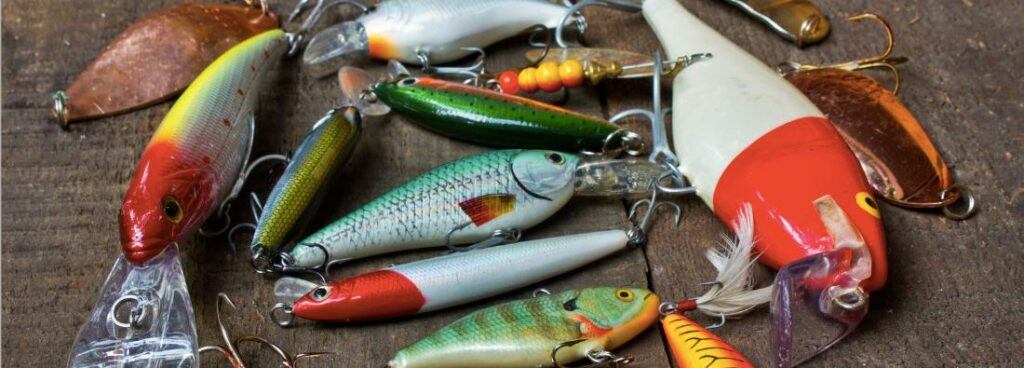Stories Worth Reeling In...
Last Updated on September 18, 2023
Are you looking to improve your winter bass fishing skills and make the most of your time on the water?
As winter sets in, the temperature drops, as does the activity of many fish. But not for the winter bass!
These hardy fish keep getting bigger, making them the perfect target for anglers who want to reel in a trophy catch.
So, grab your gear and get ready to discover insider tips and tricks for successful winter bass fishing on the river, estuary, beach, lake, and pier.
Table of Contents
The key to catching bass during the winter months, in my experience, is to concentrate on locations where they look for food and to employ lures that imitate the bass’s natural prey. Patience, studying their habits, and a slow retrieval rate are key factors.
One of the keys to successful winter bass fishing is understanding the behavior of these fish during the colder months.
During winter, bass tends to slow down and become more lethargic. This is because the water temperature drops, causing their metabolism to slow down. As a result, they are less active and less likely to chase after fast-moving lures.
To compensate for this, anglers need to adopt a slower and more methodical approach to fishing. This may involve using slower-moving lures, such as jigs or soft plastics, and fishing in areas where the fish are more likely to be holding up.

Choosing the right lure is one of the most critical factors in winter bass fishing.
As mentioned earlier, slow-moving lures are often more effective this time of year. Jigs, soft plastics, and crankbaits are all good options, as they can be fished slowly and enticingly to entice the bass to bite.
It’s essential to pick the right color for your lure.
In clear water, natural colors, such as brown or green, are more effective. In stained water, brighter colors, such as chartreuse or orange, can be more visible to the bass and increase your chances of catching them.
Just as important as the lure you use is the location where you fish. During the winter, bass tends to hold up in deeper water near structures such as drop-offs, ledges, and brush piles.
These areas provide the fish with a secure place to hide from predators and conserve energy.
You will have to go out there and get your hands “dirty”! Explore, understand, and get to know these spots.
If you have, you can use your fish finder to locate areas of deeper water and structure and then fish those areas thoroughly.
It is also helpful to keep a journal of your catches and where you caught them, as this can help you identify patterns and hot spots for future trips.
Now its time for a litle breakdown
The river is a prime location for winter bass fishing, as the fish tend to congregate in deep holes where they can find food and shelter from the cold.
To catch river bass in winter, you will need to use slow-moving lures that mimic the fish’s natural prey, such as worms, crawfish, and shad.
The estuary is a unique and challenging environment for winter bass fishing, as the water is a mixture of salt and fresh water.
To succeed, you will need to use lures that mimic the baitfish in the estuary, such as herring, anchovy, and sardine.
Beaches offer challenges for winter bass fishing, as the surf can be rough, and the wind can make casting difficult.
To catch beach bass, you must use lures that mimic the sand crabs and other crustaceans in the surf zone.
If you want to go after the big ones, you should go for bottom fishing with live bait like squid or octopus tentacles.
Lakes can be a productive location for winter bass fishing, as the fish gather near drop-offs, structures, and other underwater features where they can find food and shelter from the cold.
To catch lake bass, you will need to use lures that mimic the forage fish found in the lake, such as shad and minnows.

Piers can be a great place to catch winter bass. The fish will often gather under the pilings to feed on the baitfish and crustaceans attracted to the structure.
To catch pier bass, you must use lures that mimic the fish’s natural prey, such as worms, crabs, and shrimp.
When fishing for winter bass, it is important to remember that slow and steady wins the race. This means that you need to be patient and not rush your fishing.
Take your time and fish each area thoroughly, making sure to use a variety of lures and techniques to entice the fish to bite.
Downsizing your bait to smaller sizes, like 1.5 or 2 inches, is crucial because it matches the slowed metabolism of bass, making it easier for them to catch prey.
Bass may be suspended because of their slowed metabolism in cold water, and they prefer to “snack” on smaller prey items that are easy to catch rather than expending energy on chasing bigger prey.
Clearwater often means wary bass, so using lighter lines like 10-pound or 8-pound fluorocarbon can be necessary to get bites, even if it requires extra caution around cover.
Soft plastic baits or lures, such as Texas-rigged or Carolina-rigged worms, are ideal for slow retrieves in cold water when bass are less active.
Whether you are a seasoned angler or just starting out, these tips will help you make the most of your time on the water and catch more fish this winter.
So, get out there and give them a try! By following these tips and techniques, you will be well on your way to becoming a successful winter bass fisherman.
Happy fishing!